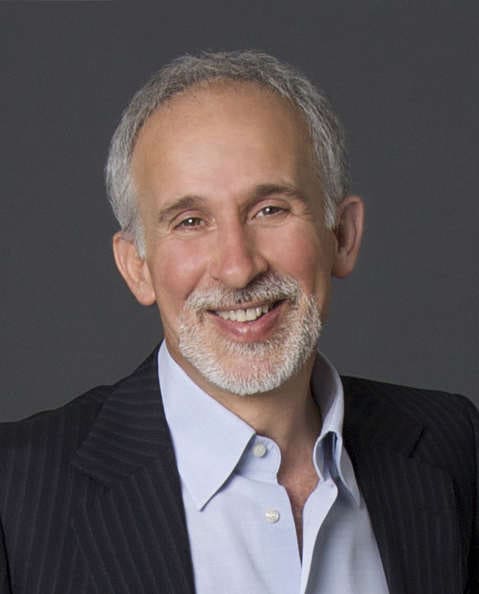
Medically Reviewed by Tom Tooma, M.D., Founder/Medical Director
LASIK Gone Wrong? Separating Social Media Myths from Medical Reality
Last Updated:

Medically Reviewed by Tom Tooma, M.D., Founder/Medical Director

Article At a Glance
While it’s important to acknowledge that any surgical procedure carries some risk, the truth about LASIK is far more reassuring than the fear-inducing social media posts might suggest.
Table of Contents
If you’ve been researching LASIK eye surgery, chances are you’ve come across some concerning stories—people claiming their LASIK went wrong, suffering complications, or regretting their decision. While it’s important to acknowledge that any surgical procedure carries some risk, the truth about LASIK is far more reassuring than the fear-inducing headlines might suggest.
Understanding the True Risk of LASIK
LASIK is one of the most studied elective procedures in modern medicine, with over 15 million procedures performed since its FDA approval in 1999. Each year, approximately 800,000 LASIK surgeries are performed in the U.S. alone. Despite the occasional alarming anecdote, LASIK maintains an incredible 98.5% patient satisfaction rate—one of the highest satisfaction rates of any medical procedure.
A comprehensive review of LASIK outcomes published in the scientific journal Ophthalmology analyzed data from 97 scientific articles covering 67,893 eyes. The study found that only 0.61% of cases experienced a loss of two or more lines in corrected distance visual acuity, and only 1.2% of patients reported dissatisfaction with their LASIK results (PubMed). These findings reinforce the overwhelming safety and success of LASIK when performed correctly.
You deserve clear vision. We can help.
With 135+ locations and over 2.5 million procedures performed, our board-certified eye surgeons deliver results you can trust. Your journey to better vision starts here.
Why Do LASIK Horror Stories Get So Much Attention?
The reality of LASIK outcomes is often overshadowed by a vocal minority who experience complications. This is a common phenomenon in online reviews—people who have a negative experience are far more likely to share their story than those who had a smooth, successful outcome.
At NVISION Eye Centers, our eye surgeons have performed more than 2.5 million procedures over the years. NVISION has close to 50,000 positive reviews from satisfied patients, yet most of our happiest patients don’t feel the need to post about their LASIK because it went exactly as expected—quick, painless, and life-changing. The people whose LASIK went well simply go on with their lives, enjoying their improved vision without feeling the need to post about it online.
Additionally, social media and online forums can amplify the most extreme cases, making it seem like LASIK complications are far more common than they actually are. The truth is that LASIK has been extensively studied, and the statistics overwhelmingly show that it is a safe and effective procedure for most people.
The Risks of Choosing the Wrong Provider
While LASIK is a safe and effective procedure, one thing is clear: choosing the right surgeon matters. Some of the most publicized LASIK failures come from individuals who opted for discount providers offering unrealistically low prices—such as $300 LASIK deals—often at the cost of experience, technology, and personalized care.
Many of these budget providers cut corners, using outdated technology or skipping essential pre-operative evaluations to determine whether a patient is truly a good candidate for the procedure. Not everyone is an ideal LASIK candidate, and a thorough screening process helps ensure the best possible outcomes. At NVISION, we emphasize safety, precision, and top-tier technology. Our surgeons are among the most experienced in the field, using advanced laser systems that have continued to improve over the past 26 years. LASIK technology today offers better outcomes, faster recovery, and lower complication rates than ever before.
How LASIK Technology Has Improved Over the Years
One of the biggest misconceptions about LASIK is that it is the same procedure today as it was 20 years ago. In reality, LASIK technology has seen significant advancements, including:
- Topography-guided LASIK (Contoura LASIK): We are all born with optical imperfections (higher order aberrations). Wavefront-optimized LASIK (Custom LASIK) does not treat the individual aberrations. Contoura LASIK customizes the procedure to each patient’s unique eye shape by measuring 22,000 elevation points on the cornea. The laser software then converts these measurements into a treatment profile that treats all the optical imperfections. The benefit is doubling the chance of seeing better than 20/20.
- Femtosecond Lasers: Instead of using a microkeratome blade, the Femtosecond Laser is a computer-controlled laser that is used to create the LASIK flap. It is safer and more precise, minimizing the chance of any adverse outcomes.
- Eye Trackers: Early lasers used in LASIK surgery did not utilize eye trackers. Modern lasers have eye tracking devices that can measure the eye position more than 1,000 times per second. That makes the procedure safer and more precise since every pulse is delivered in the precise location.
- Better screening techniques: Modern diagnostic tools allow surgeons to identify patients who may not be ideal candidates for LASIK, preventing potential complications before they arise. Thanks to this screening, doctors can suggest an alternative to LASIK if a patient isn’t an ideal candidate.
- Faster recovery times: New techniques and post-operative care methods have reduced recovery times, allowing most patients to return to normal activities within a day or two after their procedure.
Common LASIK Myths – and the Facts
Myth: “LASIK can leave you permanently blind.”
Fact: According to research by the American Refractive Surgery Council, there has never been a documented case of someone going blind from LASIK in the U.S. when performed by a qualified surgeon.
Myth: “Everyone gets dry eyes after LASIK.”
Fact: While mild dryness can occur temporarily, long-term dry eye symptoms are rare and often linked to pre-existing conditions. Patients with a history of dry eyes can be treated proactively before and after LASIK to minimize discomfort. If a surgeon is concerned that a patient is more susceptible to dry eye, they may suggest a different vision correction procedure such as the SMILE procedure or the EVO ICL.
Myth: “LASIK results don’t last.”
Fact: LASIK provides permanent vision correction. Some patients may need an enhancement years later due to natural aging of the eye (called presbyopia), but the effects of LASIK itself do not wear off.
Myth: “LASIK is painful.”
Fact: The LASIK procedure itself is painless thanks to numbing eye drops. Patients typically feel only mild pressure for a few seconds, and most experience minimal discomfort during recovery.
Myth: “If you have LASIK, you can never wear contacts again.”
Fact: In rare cases where vision changes significantly over time, patients may still be able to wear contacts if necessary. However, most LASIK patients achieve long-term vision correction without the need for contacts or glasses.
But Why Do Some LASIK Surgeons Wear Glasses?
One question that occasionally pops up in social media threads critical of LASIK is: “If LASIK is so great, why do LASIK surgeons wear glasses?” It’s a fair question—but one that’s often based on a misunderstanding of how vision and aging work.
The simple answer? Most of the glasses you see on LASIK surgeons are reading glasses, not glasses for distance correction. As people age—typically starting in their 40s or 50s—they naturally develop a condition called presbyopia, where the eye loses its ability to focus on close objects. This is a completely normal, age-related change that affects everyone, whether or not they’ve had LASIK.
LASIK improves distance vision but doesn’t correct presbyopia (the need for reading glasses). So even a surgeon who had a perfect LASIK outcome in their 30s will still require reading glasses later in life. Presbyopia is a natural condition that occurs in our 40s, regardless of whether someone has had LASIK or not. The presence of glasses on a LASIK surgeon’s face is not a sign that they don’t trust the procedure—it’s a reflection of biology, not technology. In fact, LASIK surgeons are 5 times more likely to have had LASIK, compared with the general population, and 91% of LASIK surgeons have operated on their family members (PubMed).
The Bottom Line: LASIK Is Safe in the Right Hands
If you’ve been concerned about LASIK horror stories, it’s crucial to separate fact from fear. The reality is that the vast majority of LASIK patients experience life-changing vision improvement with minimal risk and high satisfaction. Choosing a reputable provider with experienced surgeons is the best way to ensure a smooth, successful experience.
LASIK has evolved significantly since its early days, with modern technology making it safer and more precise than ever before. With nearly 800,000 LASIK procedures performed each year, and millions of people enjoying the benefits of clear vision, the procedure remains one of the safest and most effective vision correction options available today.
How to Choose the Right Vision Correction Provider
Choosing the right LASIK provider is one of the most important decisions you can make when considering vision correction surgery. While price is often a factor, it should never be the deciding one. Look for a provider that emphasizes thorough pre-operative screening to ensure you’re a good candidate, employs board-certified surgeons with extensive LASIK experience, and uses the latest, FDA-approved laser technology. At NVISION Eye Centers, we prioritize safety and long-term outcomes—not shortcuts. Our track record, with nearly 50,000 positive patient reviews and decades of surgical excellence, speaks volumes. Don’t let flashy discounts or too-good-to-be-true pricing lure you into compromising your vision. The right provider will invest in you, your safety, and your future vision.
Not Sure About LASIK, but Still Want to Be Free from Glasses and Contacts?
LASIK is a fantastic option for many patients—but it’s not the right solution for everyone. That’s why NVISION Eye Centers offers the full spectrum of vision correction procedures, not just LASIK. Depending on your eye health, lifestyle, and specific vision needs, alternatives like PRK (Advanced Surface Ablation), SMILE, Custom Lens Replacement (CLR), or Implantable Collamer Lenses (EVO ICLs) may be better suited to help you achieve long-term visual freedom.
During your consultation, we take the time to fully evaluate your eyes and go over every appropriate option to ensure you’re matched with the safest and most effective treatment. At NVISION, our goal isn’t just to perform LASIK—it’s to find the solution that’s right for you.
If you’re considering LASIK, schedule a consultation with NVISION Eye Centers to get accurate, personalized information from experts you can trust. Our team is dedicated to ensuring every patient receives the highest level of care and the best possible outcome.
You deserve clear vision. We can help.
With 135+ locations and over 2.5 million procedures performed, our board-certified eye surgeons deliver results you can trust. Your journey to better vision starts here.
References
- How Many People Get LASIK Each Year? (April 2025). NVISION Eye Centers.
- Modern laser in situ keratomileusis outcomes. (April 2025). Journal of Cataract & Refractive Surgery.
- LASIK Complications and LASIK Eye Surgery Risks. (April 2025). Refractive Surgery Council.
- Prevalence of laser vision correction in ophthalmologists who perform refractive surgery. (April 2025). Journal of Cataract & Refractive Surgery.

Dr. Tooma, the founder of NVISION® Eye Centers, has performed well over 130,000 LASIK surgeries, making him the most experienced LASIK surgeon in the Western United States.
This content is for informational purposes only. It may have been reviewed by a licensed physician, but is not intended to serve as a substitute for professional medical advice. Always consult your healthcare provider with any health concerns. For more, read our Privacy Policy and Editorial Policy.
